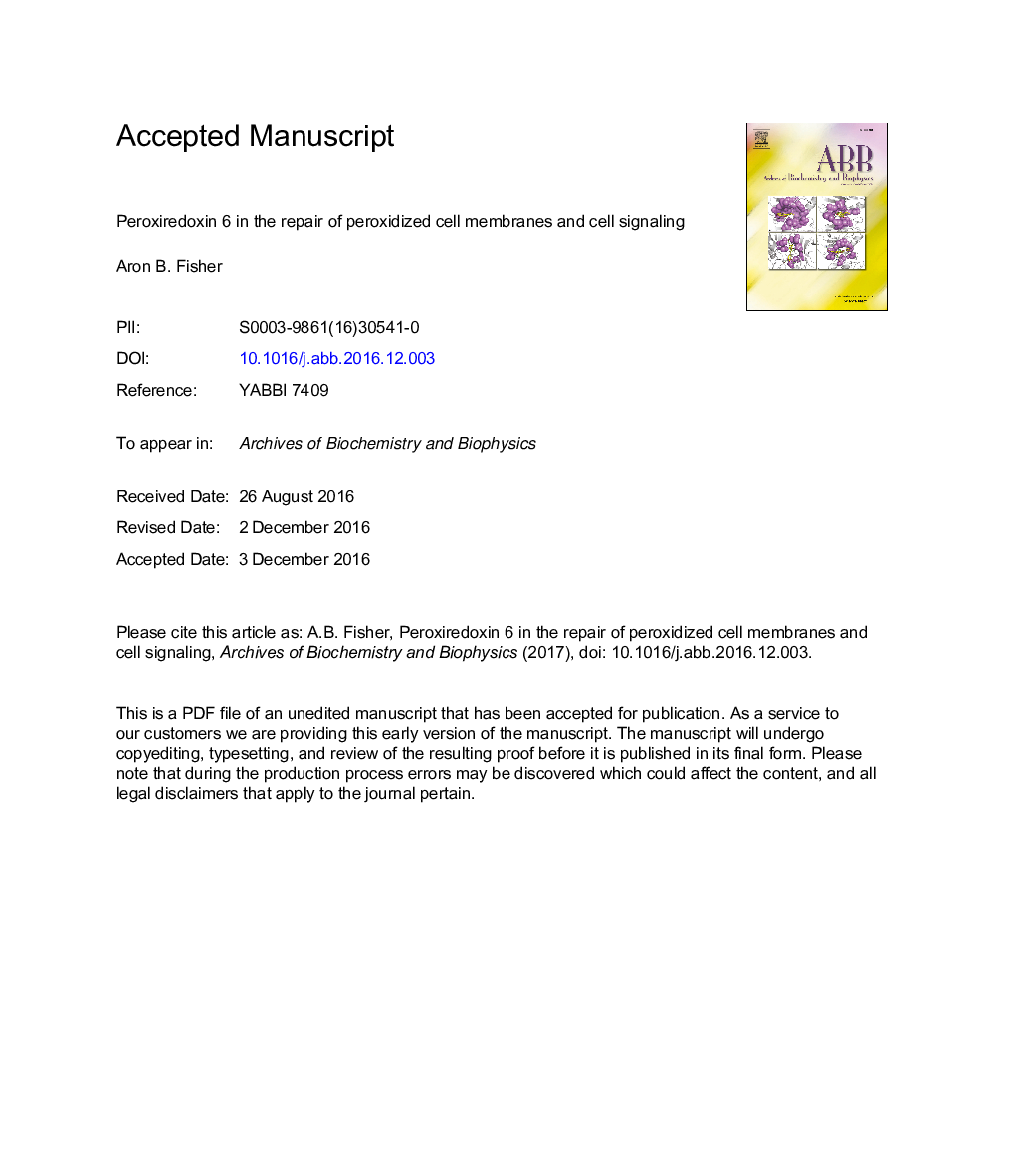| Article ID | Journal | Published Year | Pages | File Type |
|---|---|---|---|---|
| 5504441 | Archives of Biochemistry and Biophysics | 2017 | 59 Pages |
Abstract
Peroxiredoxin 6 represents a widely distributed group of peroxiredoxins that contain a single conserved cysteine in the protein monomer (1-cys Prdx). The cys when oxidized to the sulfenic form is reduced with glutathione (GSH) catalyzed by the Ï isoform of GSH-S-transferase. Three enzymatic activities of the protein have been described:1) peroxidase with H2O2, short chain hydroperoxides, and phospholipid hydroperoxides as substrates; 2) phospholipase A2 (PLA2); and 3) lysophosphatidylcholine acyl transferase (LPCAT). These activities have important physiological roles in antioxidant defense, turnover of cellular phospholipids, and the generation of superoxide anion via initiation of the signaling cascade for activation of NADPH oxidase (type 2). The ability of Prdx6 to reduce peroxidized cell membrane phospholipids (peroxidase activity) and also to replace the oxidized sn-2 fatty acyl group through hydrolysis/reacylation (PLA2 and LPCAT activities) provides a complete system for the repair of peroxidized cell membranes.
Keywords
GSH peroxidaseKGFSP-ALPCATPMNPHGPxPCOOHGSSGLROPrdxDPPCGPXGSTGSHOxidized GSHdipalmitoyl PCGSH S-transferaseNOxt-BOOHAcute lung injuryphospholipase A2Lamellar bodiesAliNADPH oxidasePhospholipid remodelingPLOOHKeratinocyte growth factorantioxidant response elementphosphatidylcholinePhospholipid hydroperoxide glutathione peroxidasepolymorphonuclear leukocytesAREtert-butyl hydroperoxidePhospholipid hydroperoxideSurfactant protein APeroxiredoxinGlutathione
Related Topics
Life Sciences
Biochemistry, Genetics and Molecular Biology
Biochemistry
Authors
Aron B. Fisher,
